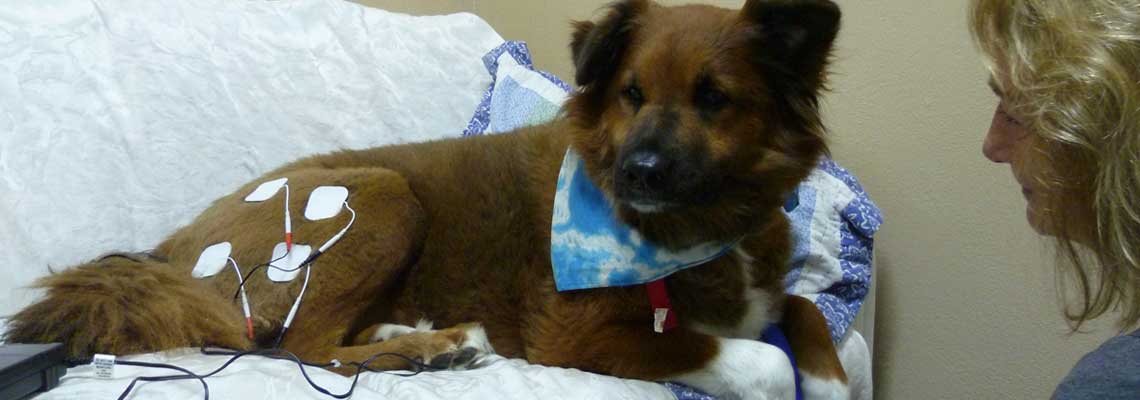Rehabilitation speeds up the healing process in pets, just as with humans, and maximizes the mobility and strength of all body tissues. The type of rehabilitation technique chosen depends on the type of your pet’s injury. These various modalities may include aquatic therapy (controlled swimming in the pool or at the beach), massage, joint manipulation, thermal (hot & cold) therapies, therapeutic exercises and NMES (Neuro Muscular Electrical Stimulation).What are the Benefits of Rehabilitation?
Rehabilitation, when instituted prior to or soon after surgery, will help maintain normal range of motion in affected joints, decrease pain of injured tissues, facilitate healing of inflamed and injured tissues, and prevent soft tissue contracture and fibrosis. Following a rehabilitation program will improve your pet’s endurance, mobility and flexibility, thus improving their overall strength and function.
Why will swimming aid in recovery or improve strength and stamina?
Aquatic therapy for dogs allows them to begin the rehabilitation process earlier than normal. The buoyancy, resistance and comfort from the water create an extremely effective, low-impact workout. It maximizes the ability for dogs to gain muscle strength and endurance in a controlled atmosphere and for most dogs it’s Fun! We recommend the use of a ‘flotation coat’ [ Ruff wear – Float Coat ] as this helps position the dogs in the water better and allows free motion and aids with confidence in the water.
Pets suffering orthopedic or neurological injury (e.g. post orthopedic surgery, either fracture or Cruciate injury) may be able to return to their pre-surgical activities much faster as muscle tone is strengthened and flexibility and range of motion are increased. Pets with more long-term diseases (e.g. neurological, cancer, arthritis, obesity) may enjoy an improved quality of life by becoming better able to cope with every day activities such as climbing stairs, running in the yard, or chasing a ball.
Which Patients Benefit Most from Rehabilitation?
Patients that benefit most from rehabilitation are, among others, those recovering from surgery, especially orthopedic or spinal surgery, and those suffering from neurological disease, cancer, arthritis, geriatric conditions, muscle atrophy, obesity, or any other debilitating injury that has rendered a pet immobile.
Along with a patient specific pain control program and exercises specific to your pet’s requirements our most common modalities are easy to implement in a home environment. With a little care and enthusiasm the benefits of physiotherapy are rewarding and we have seen a great number of pets benefit greatly from this new and rewarding aspect of our veterinary care.

